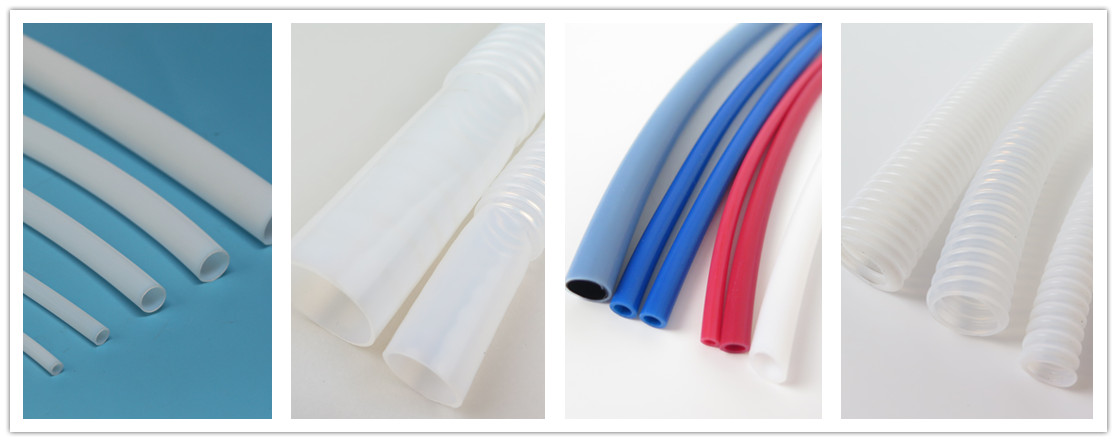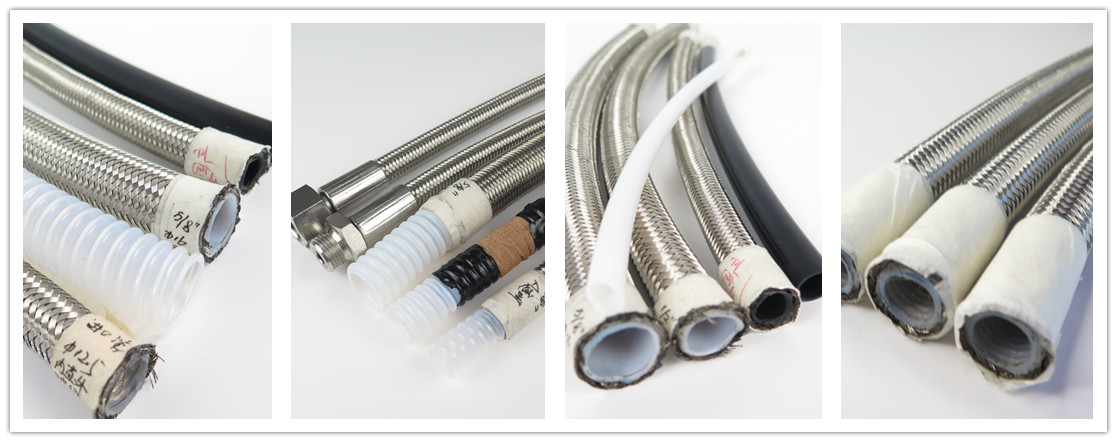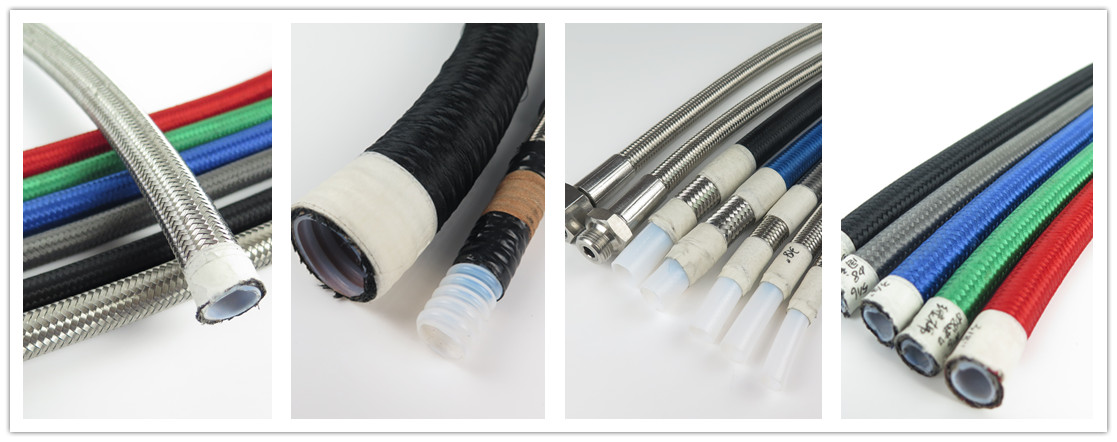PTFE (sleeve) hose is a special hose made of polytetrafluoroethylene (PTFE commonly known as Teflon, plastic king) material after extrusion and sintering, drying, high temperature sintering, and shaping.

1. PTFE pure hose
PTFE hose is made from virgin 100% PTFE resin without any pigment or additive
Color: transparent, translucent, milky white
•Smooth bore hose is Aerospace&Transportation Technology, Electronics, Components & Insulators, Chemical & Pharmaceutical Manufacturing, Food Processing, Environmental Sciences, Air Sampling, Fluid Transfer Devices and Water Processing Systems.
•Convoluted tubing is very flexible and is ideal for applications where a tighter bend radius,increased pressure handling or crush resistance is needed. •Convoluted tubing can be sourced with flares,flanges,cuffs,or a combination of more than one Optimized Tubing Solution.

2. SS braided PTFE hose
Application: Automotive, fluid, paint, food, aerospace, electronic parts and insulators, chemicals and water treatment systems
Standard: SAE 100 R14
Structure
Inner tube: 100% PTFE resin without any pigment or additive,also can increase anti-static (carbon-containing performance)
Braid Layer: Liner and single or double AISI 304 or 316stainless steel outer braid the wire
The surface of the PTFE braided hose can be covered with cotton thread, PU, PVC, PE, silicone tube and PTFE heat-shrinkable tube. According to different needs, Yatai can process this.

Temp. Range: -65°C -260°C
Advantages:
①High chemical stability: It can withstand all strong acids, including aqua regia, hydro fluoric acid, concentrated hydro chloric acid, nitric acid, fuming sulfuric acid, organic acids, etc., strong alkalis, strong oxidants, reducing agents and various organic solvents. Very suitable for feeding high-purity chemicals
②Low coefficient of friction: The coefficient of friction is generally only 0.04, which is a very excellent self-lubricating material, and the coefficient of friction does not change with temperature.
③Excellent anti-sticking property, the inner wall of the tube is not easy to adhere to colloids and chemicals
④Excellent aging resistance, can be used outdoors for a long time
⑤Excellent electrical insulation performance: PTFE is a highly non-polar material with good dielectric properties, extremely high electrical resistance, and a dielectric constant of about 2.0, which is the smallest among all electrical insulation materials.
⑥Some tubes have high transparency, and the internal fluid condition can be easily observed
The advantages of PTFE are materials that cannot be replaced by other substances, but no material is perfect, and PTFE materials are no exception. The disadvantages of PTFE are as follows
①Poor load force and low mechanical performance. The mechanical strength of PTFE is very small, and the hardness is also low, the elasticity is low, and the elongation at break is relatively large.
②Poor thermal conductivity. The thermal conductivity of PTFE is not good, and its thermal conductivity is relatively low. This will make the material unable to conduct heat to the surrounding medium in time, and it will be easier to cause thermal fatigue, which will greatly reduce the service life of the material.
③The coefficient of linear expansion is relatively large. The coefficient of linear expansion of PTFE is relatively large, 13 times that of steel, so PTFE materials are more prone to thermal phenomena such as cracking, which will also reduce the service life of PTFE materials.
④ Difficulty in molding and secondary processing. When molding and sintering, the shrinkage rate of PTFE products will be relatively large, 1%-5%, which is much larger than that of rigid polyvinyl chloride 0.1%-0.6%, so that it is not easy to control the precise size of its products. . Its melt viscosity is very high, and secondary processing techniques such as injection molding and calendering commonly used for ordinary plastics are not suitable for PTFE materials, and can only be used in methods similar to powder metallurgy.
⑤ Poor wear resistance. PTFE wear is also relatively large, which limits the application of PTFE
⑥The creep resistance is poor. Affected by its working environment, under long-term load, PTFE will undergo greater creep and cold flow will occur over time. The cold flow of PTFE also limits its application.
⑦ Higher production costs.
For more information about the product, please consult our sales team.
Contact us
Lotus Zhao
Tel: +86 15603187112(wechat/whatsapp)
QQ: 1002484820
Email: lotus@chnhose.com